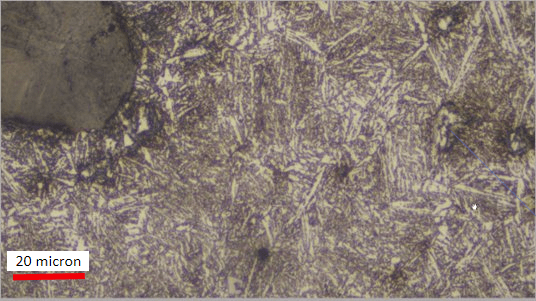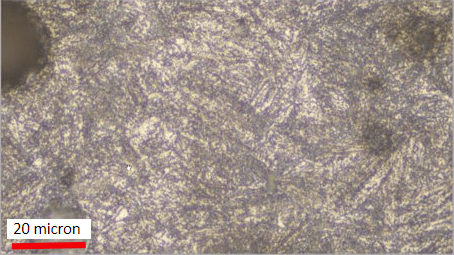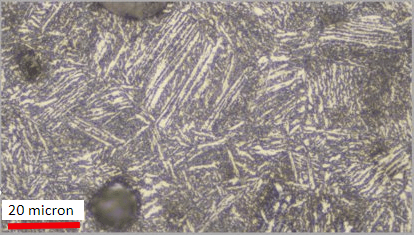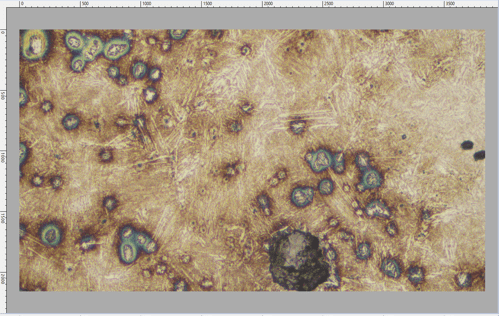UconnMaterials
Materials
Hello,
We have a batch of austempered ductile iron, but the cross-section doesn't look like ausferrite. This image is at 1000x and the etchant is suoer picral. Could this be bainite? The hardness is 27-29 HRC. It's also brittle as heck; I don't need to cut samples instead I just use a vice, hammer, and file to notch. For additional context, I subjected this material to extended aging treatments at 200C,24hr, 300C,24hr, 400C,24hr, and 500C,24hr. Images from the 200C and 500C aging treatments are included. The 200C image looks like bainite of some form- a vilella etch brings out the plates better. The 500C image looks like fine-pearlite. The treatments in the 200-400C range had a similar bainitic appearance. I'm stumped on the as-received microstructure because it doesn't resemble ausferrite as I know it. I would like to get a second opinion.
Thanks
As-Recieved:

200C/24hr:

500C/24hr:

We have a batch of austempered ductile iron, but the cross-section doesn't look like ausferrite. This image is at 1000x and the etchant is suoer picral. Could this be bainite? The hardness is 27-29 HRC. It's also brittle as heck; I don't need to cut samples instead I just use a vice, hammer, and file to notch. For additional context, I subjected this material to extended aging treatments at 200C,24hr, 300C,24hr, 400C,24hr, and 500C,24hr. Images from the 200C and 500C aging treatments are included. The 200C image looks like bainite of some form- a vilella etch brings out the plates better. The 500C image looks like fine-pearlite. The treatments in the 200-400C range had a similar bainitic appearance. I'm stumped on the as-received microstructure because it doesn't resemble ausferrite as I know it. I would like to get a second opinion.
Thanks
As-Recieved:

200C/24hr:

500C/24hr:


